An antique piano at Dunlop Station.
Photography Naya Jeffries
Sign up to our mailing list for the best stories delivered to your inbox.
Day tours and overnight camping help fund the ongoing preservation of this important piece of history.
Words Lesley Apps Photography Naya Jeffries
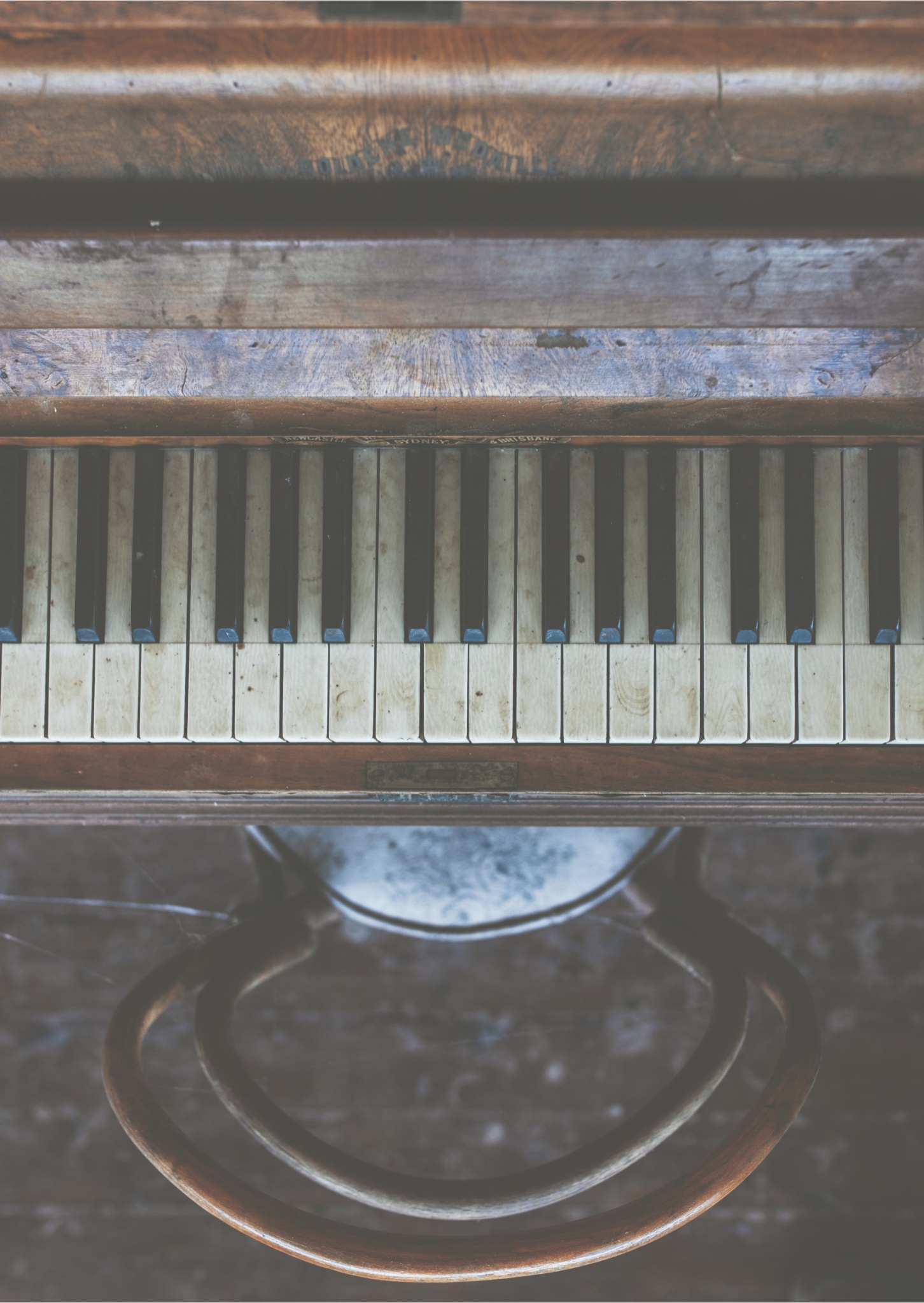
An antique piano at Dunlop Station.
Photography Naya Jeffries
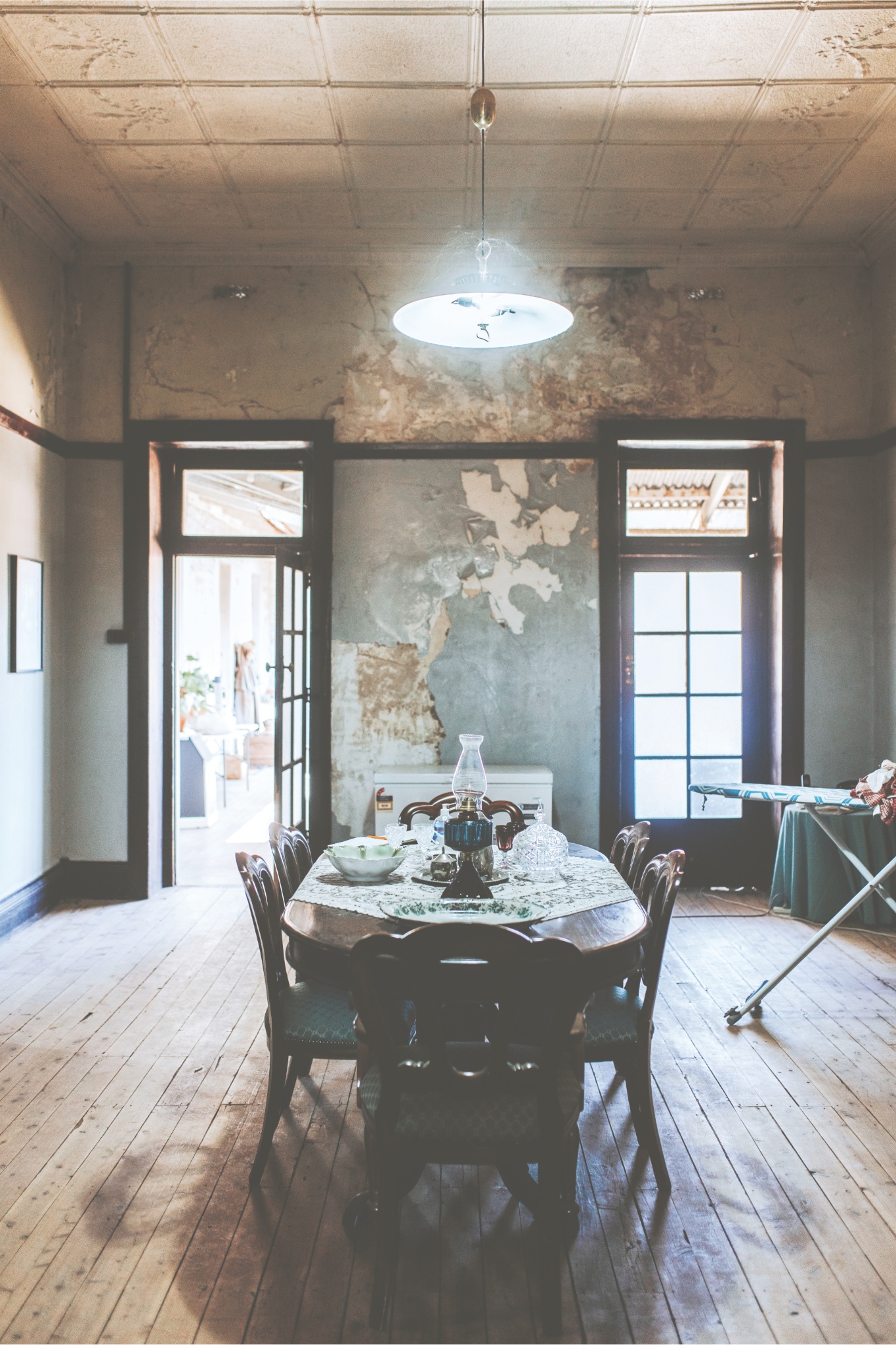
The dining room at Dunlop Station.
Photography Naya Jeffries
If you happened to wake up at Kim Chandler’s place you might find yourself wondering where the heck you were, and also what year it was, such is the shrine to history this family residence represents.
The homestead Kim and her daughter call home is part of historic Dunlop Station, situated on the Darling River near Louth in New South Wales, about 100 kilometres out the back of Bourke – the kind of landscape famously defined as the middle of nowhere.
But that couldn’t be further from the truth. While it is isolated geographically, Dunlop certainly isn’t lonely when it comes to human activity, especially now that Kim and her family are in charge. Almost twelve years ago, it was their dream to find somewhere they could run a few sheep, do some fencing and have a ‘little bit of a cottage to go with that’.
Instead, Kim and her then teenage children Kodie and James came across a ten-bedroom homestead with a cellar; a virtual time capsule, encased in 60 foot of veranda. The place was full to the brim with decades of household detritus, left behind by previous occupants. The remaining life forms had taken up squatter’s rights – namely, hordes of mice and their hungry nemesis, the snake.
This unexpected house and land package also included the property’s old store and a huge forty-five-stand shearing shed, all in the same condition as the main residence: neglected. ‘We didn’t realise what we’d fallen into until we moved in. The place was advertised as an old cheap property with potential, so when we found all the boxes of paperwork and newspapers, we thought, there’s a little bit more to this place than running a few sheep.’

A cigarette cast found at the station.
Photography Naya Jeffries
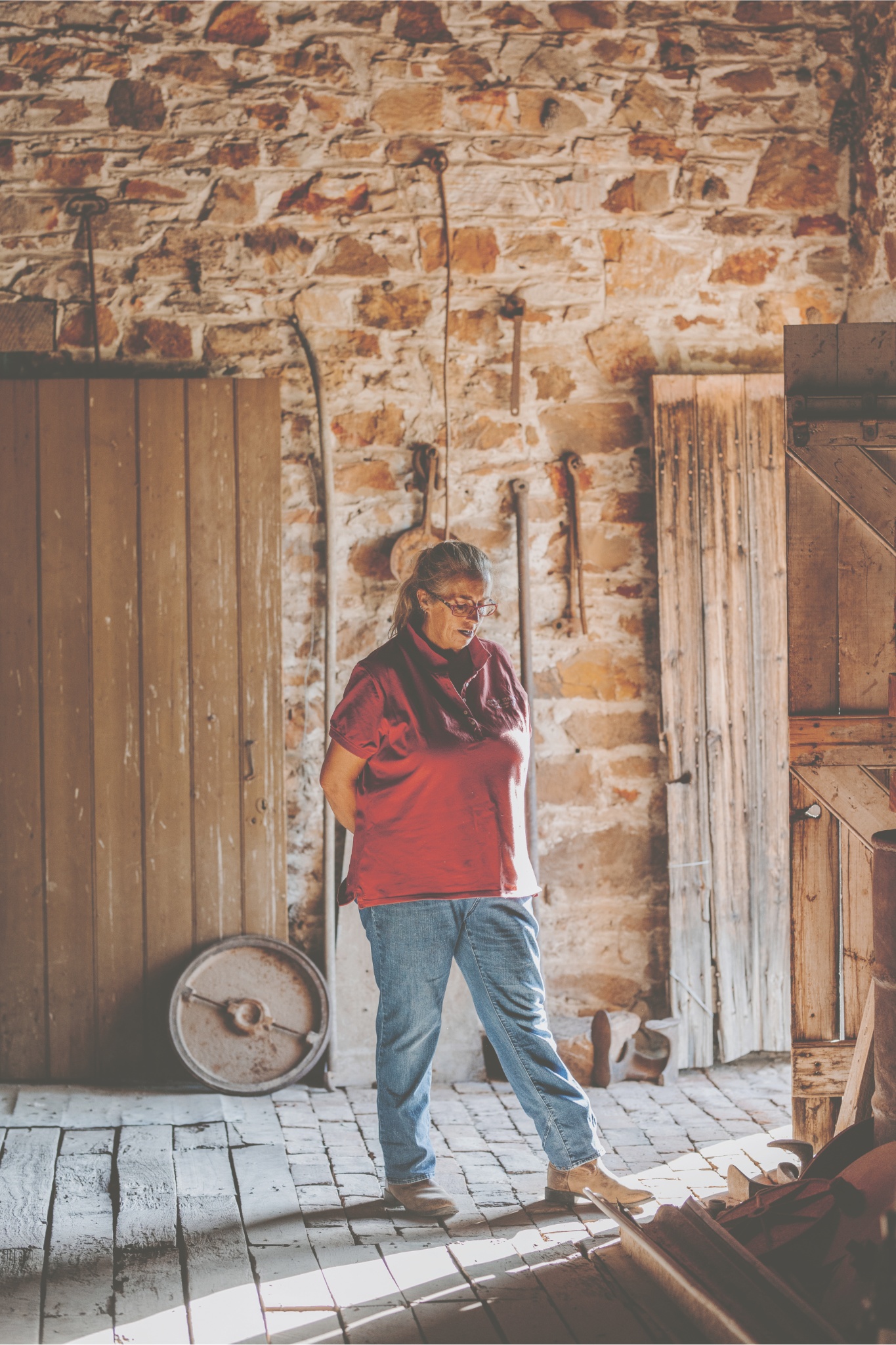
Owner Kim Chandler at the property.
Photography Naya Jeffries
In its heyday, Dunlop carried 200,000 of the fleecy icons Australia was built on the back of. Established by Sir Samuel McCaughey in the 1880s, back then the holding traversed a million acres. Over the decades and through tough times it was sold off in chunks, reducing the plot to the 880 hectares Kim and her children manage today. ‘We’re still a working farm and run sheep and goats, about three to four hundred of each.’
Diversification of land use is nothing new in contemporary farming circles, whether it’s mixed livestock, crop rotation or tourism activities. Rural operations have moved with changing times and with the climate to keep paddocks healthy and bank balances topped up.
In Kim’s case, by 2018 it became necessary to open up her property to the public, the day tours and overnight camping helping to fund the ongoing preservation of this important piece of history.
‘We never had any intentions of opening a farmstay, but increased interest from people travelling past the front gate asking could they have a look, especially during the drought, convinced us to give it try,’ she says. ‘The sheep and goats were covering costs, but there was nothing left over at the end of the week after buying the groceries and putting fuel in the cars.’
Plenty of people knew about Dunlop, Kim says, but had no access to it because it had been locked up for so long. ‘I think with the change of ownership came the hope that people could finally come and see where their grandfather or great-grandfather once worked.’
Now, some 3000 people come through each tourist season (April to November). It’s a number that continues to grow, surpassing the 2500-strong population of its nearest main centre, Bourke.
Not only are station visitors able to explore the outbuildings and exterior of a 19th century homestead, they also get to enjoy morning tea and wander its rambling interiors, viewing fascinating items from decades past.
The way Kim and Kodie manage to meld museum and modern life is extraordinary. Rooms once filled to the brim with stuff ‘left to rot’ are now all cleaned up, items salvaged through years of careful excavation arranged in thoughtful displays.
‘It’s taken us a long time to put everything back together. You’d open a tin of biscuits and there’d be a tin of tobacco or old medicine inside. Everything we opened was full of different things.’ From boxes of Bex Powders and fifty-year-old tins of lollies, to the oldest thing in the pantry: a jar of fig jam made in 1969.
‘It’s all now set up like it would have been between the 1900s right through the different decades. People can walk around and imagine they were here a hundred years ago.’ The family home and living museum is a place people can freely explore and feel comfortable. ‘We allow visitors to pick things up, sit at the big dining room table and on the beds, so they can imagine living there. People love that.’
This includes Kim’s bedroom. She wakes up early every morning and makes her antique bed before getting dressed, leaving her pyjamas in a discreet pile on the other side of the room. ‘If they go right in and around the other side of the bed, sometimes they’ll come back and tell me “somebody’s left their clothes on the floor in the front room”. I’ll have to say, “Oh, they’re mine, we live here, that’s my bedroom.”’
Keeping a house in order is a discipline Kim says she’s always had. ‘Generally nothing is out that shouldn’t be out here. Apart from walking through in the morning [and] making sure there isn’t a dead mouse on the floor, our place is like this all the time.’
While the homestead is preserved at a level Kim is happy with, the shearing shed and the old store are still works in progress. ‘We will probably never really finish everything here, which is why people keep coming back. They like seeing the progress.’
Now completely comfortable living at Dunlop Station, Kim, Kodie and James (who lives 30 kilometres away) feel like it will be their home for a good while yet. Maybe not for another hundred years, but they’ll give it a shot.
‘In few years’ time I’d like to wind down a bit [and] not work seven days a week, maybe two or three,’ says Kim. ‘James and his wife Jane are keen to take over when that happens but they don’t want to push me out.
‘We’re all close and a good little team working together on the farm and looking after the tourists and guests. We enjoy it out here and there’s always something to do. It’s like a working holiday, but when you do finish something, you can look back and really feel you have achieved something.’
Jessica Howard is the founder and editor of Bush Journal. This is an extract from her new book, Bush Wisdom, published by Affirm Press in October 2024.
Subscribe to Graziher and never miss an issue of your favourite magazine! Already a subscriber? You can gift a subscription to someone special in your life.
To hear more extraordinary stories about women living in rural and regional Australia, listen to our podcast Life on the Land on Apple Podcasts, Spotify and all major podcast platforms.
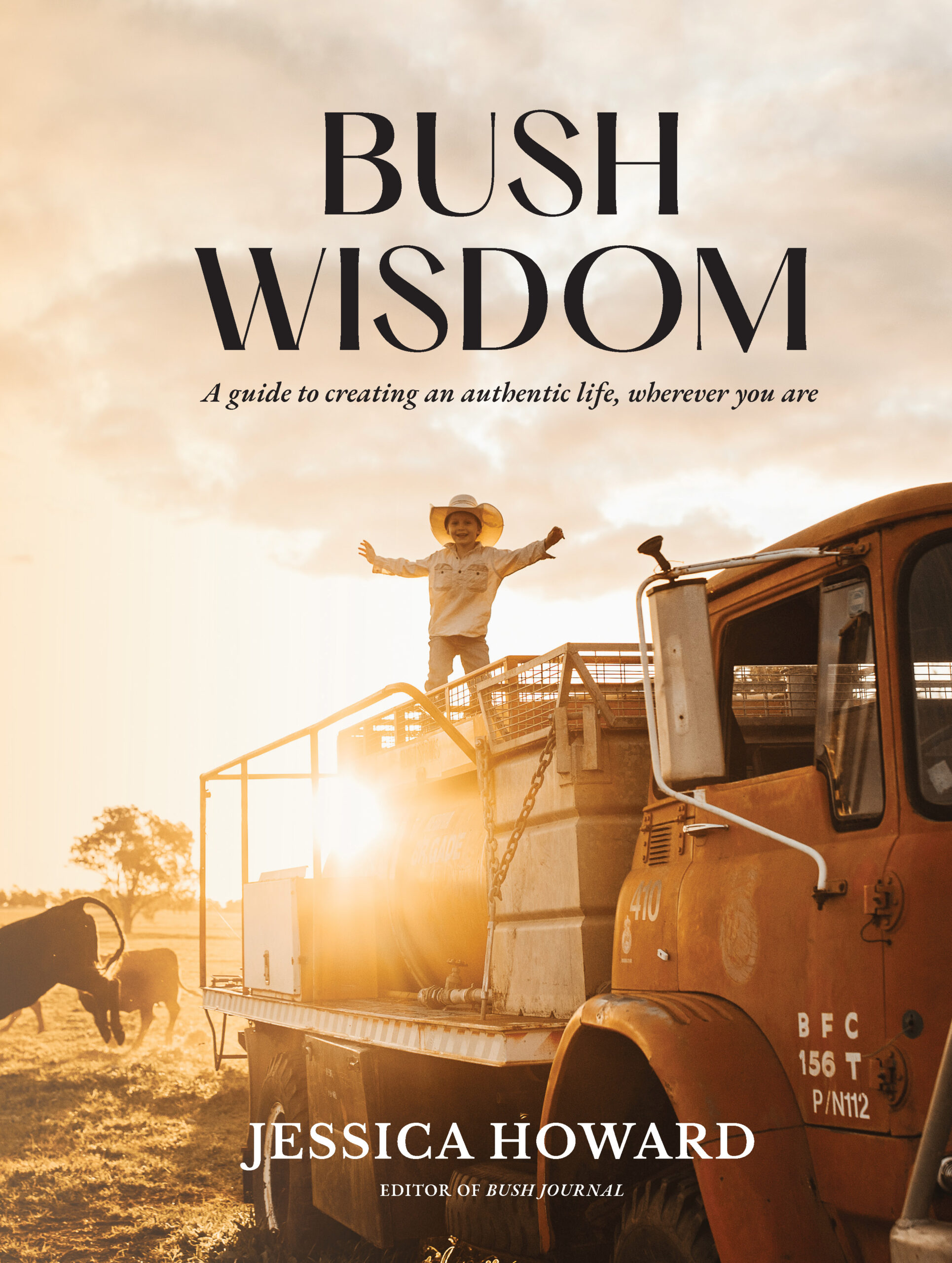
This is an extract from Jessica Howard’s new book, Bush Wisdom, which was published by Affirm Press in October 2024.
It’s available now at all good bookstores.

A stack of old papers at Dunlop Station.
Photography Naya Jeffries
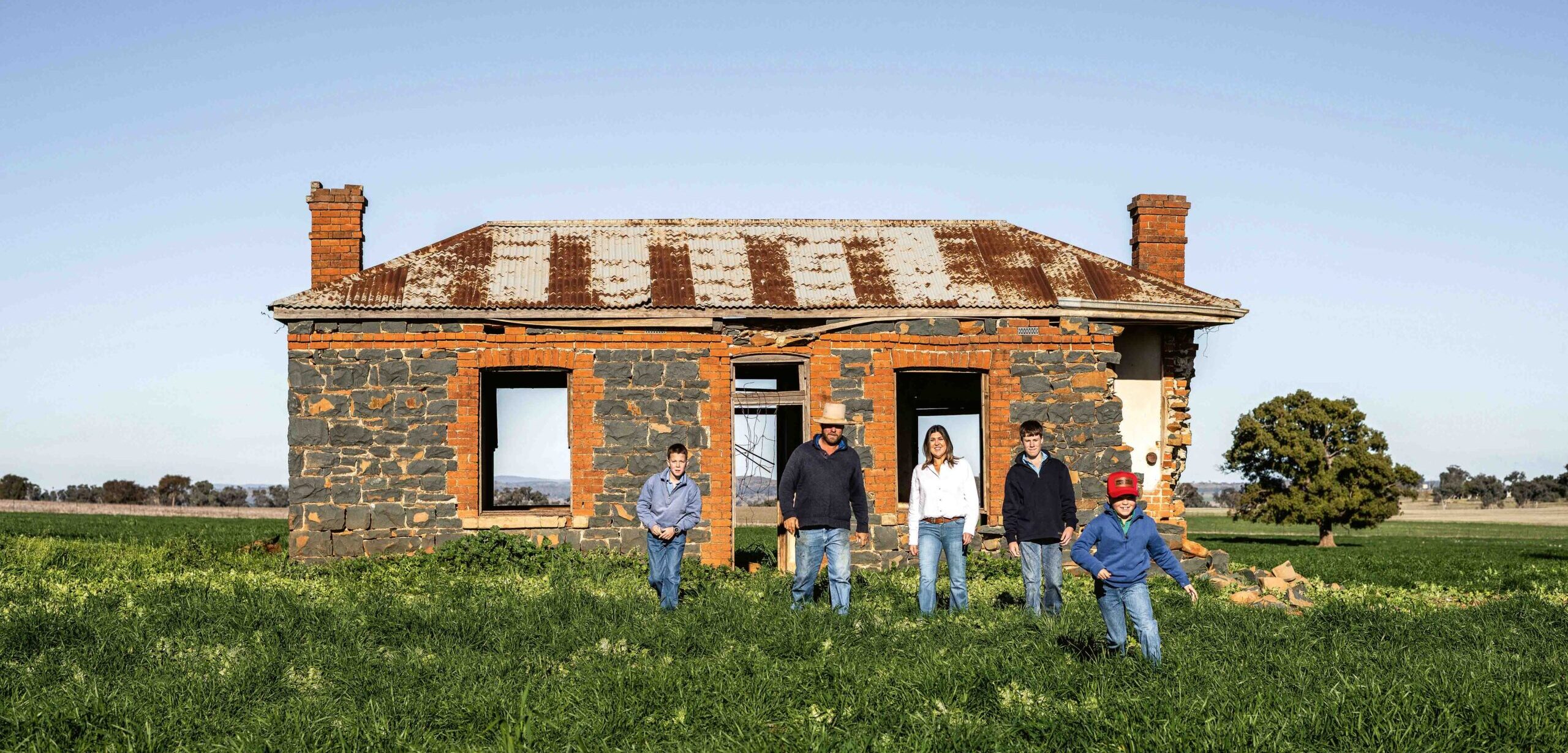
Sending her boys to boarding school was a tough decision, but Dannielle Lees wants them to experience the best of life in Sydney.
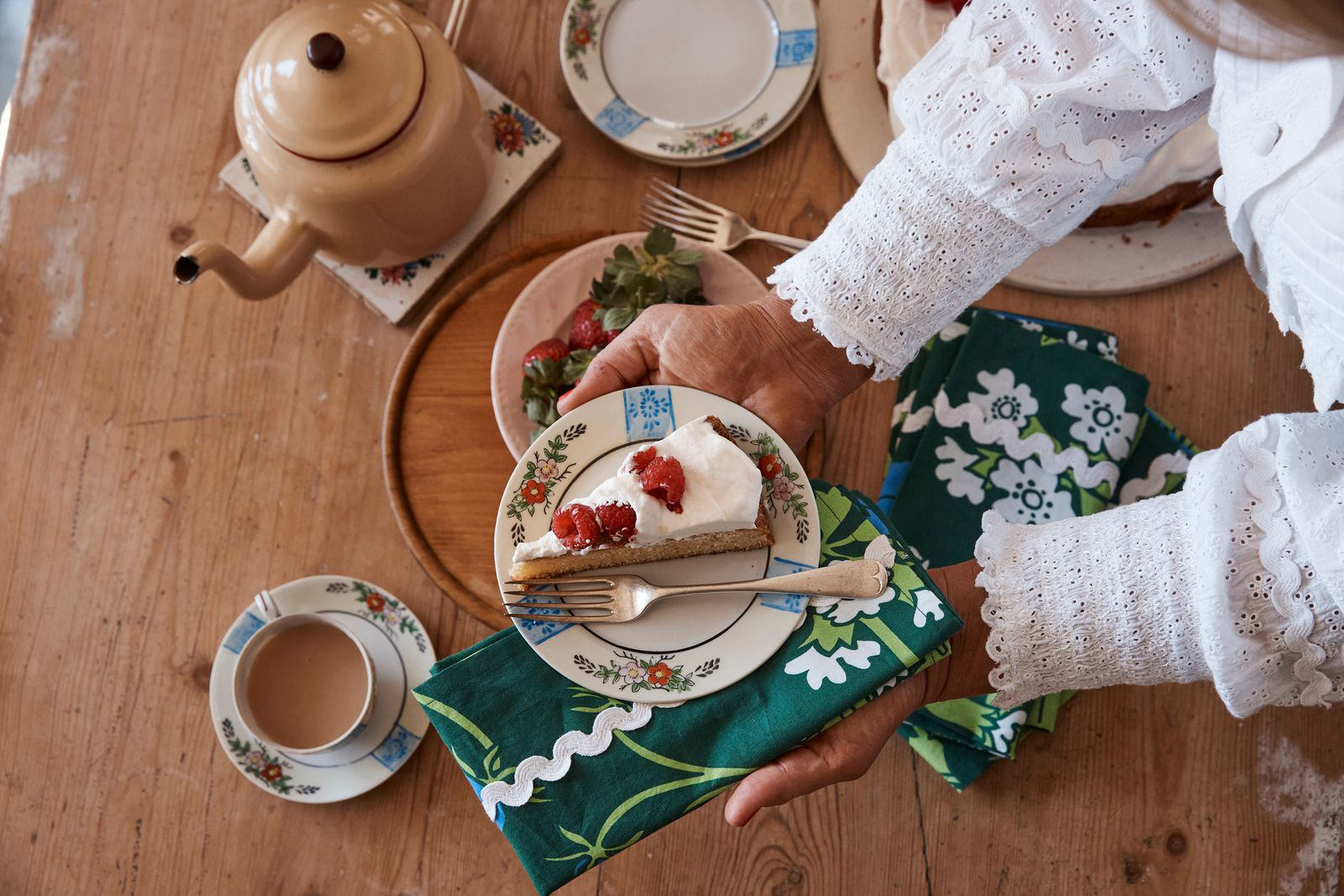
It seems the sourdough craze of the early pandemic still has its followers.